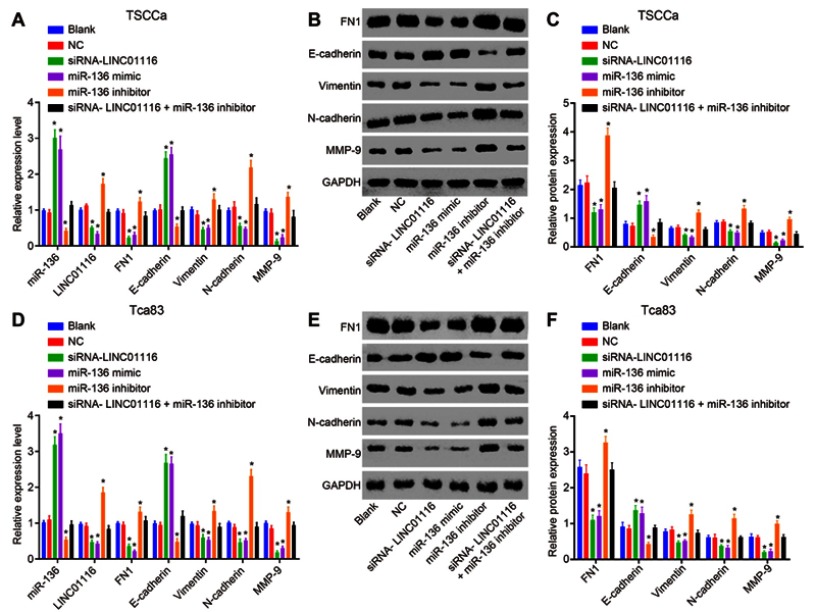Figure 8.
LINC01116 silencing or miR-136 over-expression inhibits the EMT of OSCC cells. (A) RT-qPCR was used to determine the relative expression of miR-136, LINC01116, FN1 and EMT-related genes (E-cadherin, Vimentin, N-cadherin, and MMP-9) in each group of TSCCa cell line. (B, C) Western blot analysis was used to determine the relative protein expression of FN1 and EMT-related genes (E-cadherin, Vimentin, N-cadherin, and MMP-9) in each group of TSCCa cell line. (D) RT-qPCR was used to determine the relative expression of miR-136, LINC01116, FN1 and EMT-related genes (E-cadherin, Vimentin, N-cadherin, and MMP-9) in each group of Tca83 cell line. (E, F) Western blot analysis was used to determine the relative protein expression of FN1 and EMT-related genes (E-cadherin, Vimentin, N-cadherin, and MMP-9) in each group of Tca83 cell line. The data were measurement data and expressed as mean±standard deviation. This experiment was repeated 3 times to obtain the mean value. One-way ANOVA was used for comparisons among multiple groups. *p<0.05 vs the blank and NC groups.
Abbreviations: EMT, epithelial–mesenchymal transition; miR-136, microRNA-136; RT-qPCR, reverse transcription quantitative polymerase chain reaction; FN1, fibronectin1; MMP-9, matrix metalloprotein 9; ANOVA, analysis of variance; NC, negative control.

